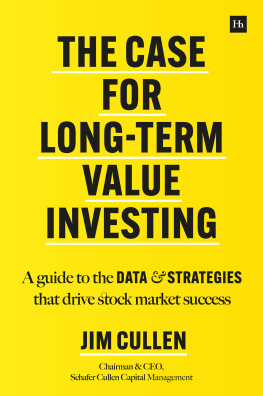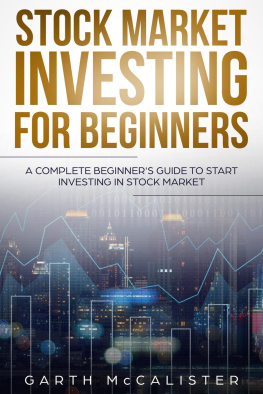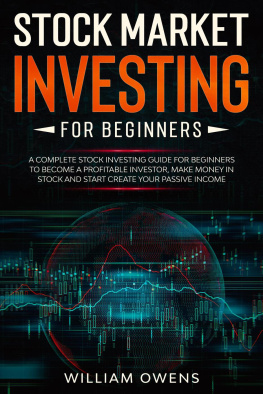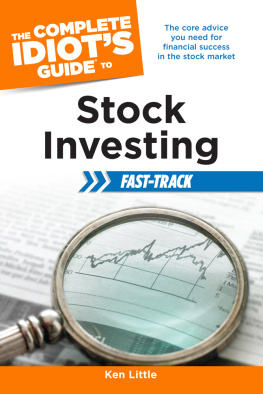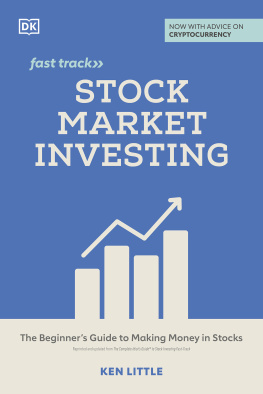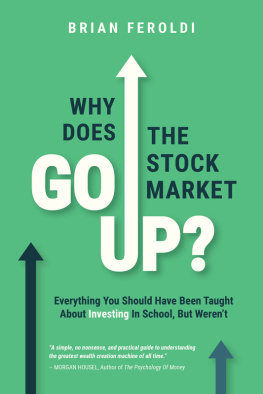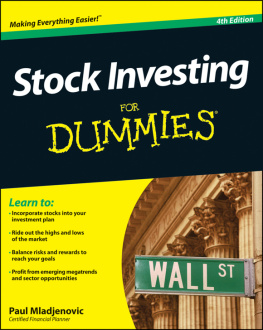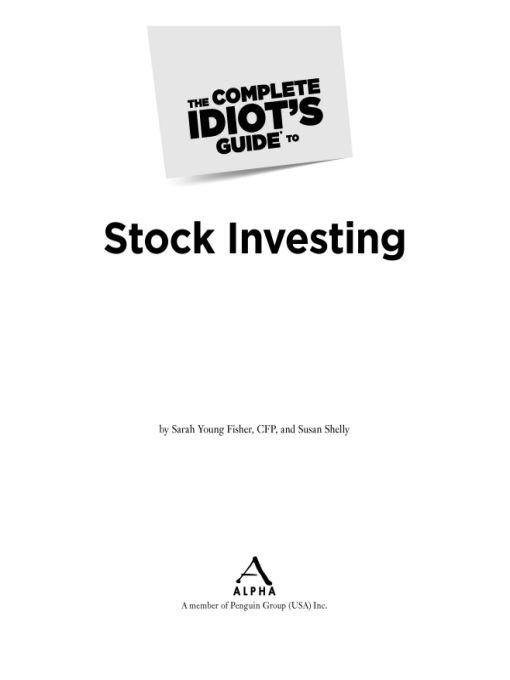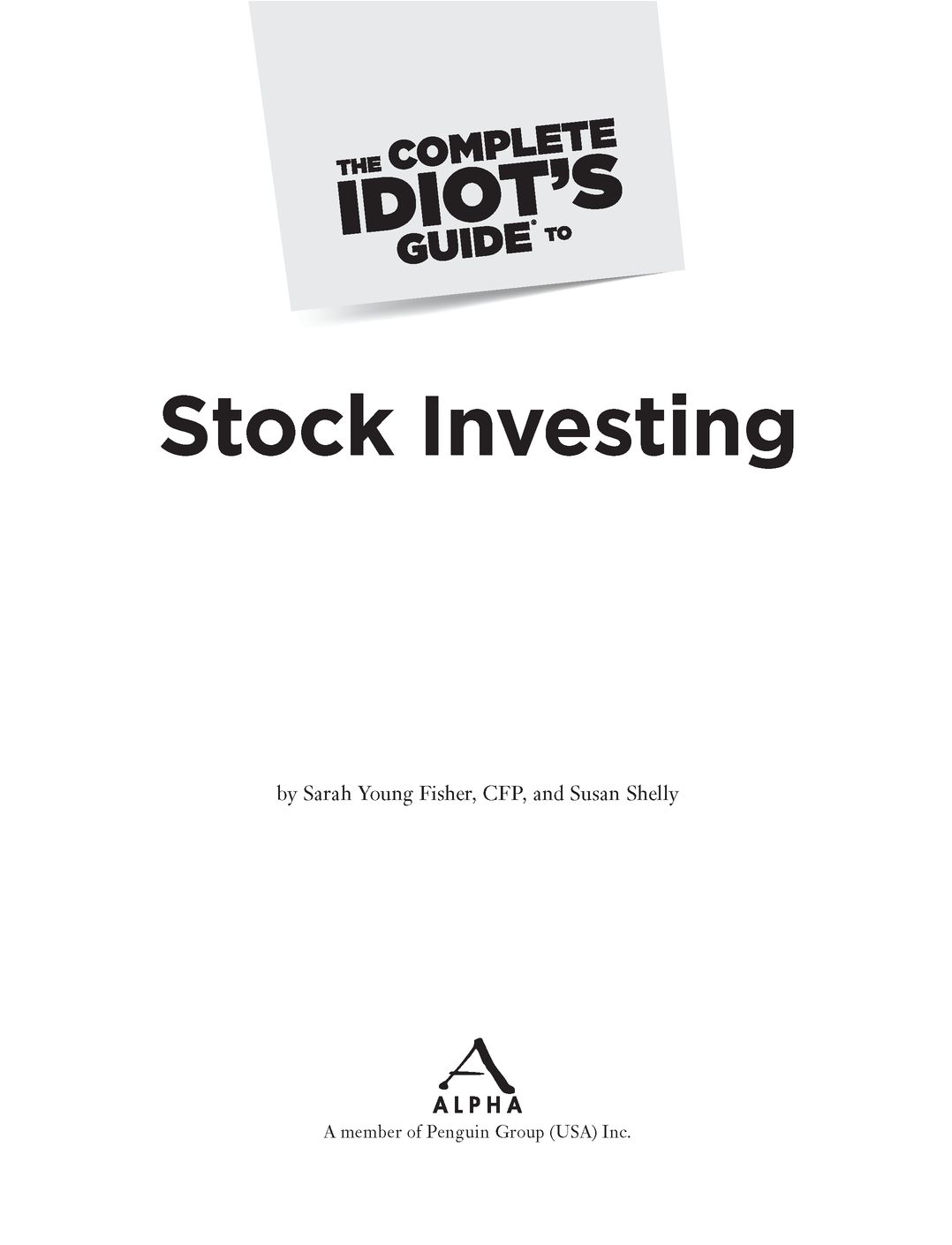Table of Contents
Introduction
It seems like almost everyone is interested in the stock market. Even those who arent invested in the market understand that its performance affects the economy, and that the economy affects the market. Learning the best way to invest in the stock market, however, can seem confusing and even overwhelming.
The language of the stock market is daunting. Terms such as fundamental analysis, market data, international indexes, buying on margin, and others can leave a beginning investor wondering if theyll ever be able to put it all together. And the thought of needing to research companies before deciding to buy their stock can make it seem like investing might just be too darned much work.
But wait a minute. Really, how hard can it be? After all, people have been investing in and making money in the stock market since the country was founded. Granted, investors used to be primarily upper-crust financial typesa sort of old boys club that dominated Wall Street and knew the ins and outs of the investing game. But these days, with more and more folks like you and me jumping into the stock market, the mysterious curtain has fallen away, and we are free to jump in and take our turns at investing.
The Internet, in particular, has made stock market investing more accessible and understandable. Not only can we set up online brokerage accounts that allow us to buy and sell stock whenever we think its a good idea, we can access unbelievable amounts of reliable, useful informationmuch of it at no cost.
If youve picked up this book because you want to learn more about the stock market and begin with a strategy of long-term investing, you are to be congratulated. All in all, the market has proven to be the most profitable investment over time. Its risky business if youre looking for big gains in the short term, but if youre willing to jump in and stay in for the long haul, chances are very good that youll realize a good return on your investment. Youre apt to need a little advice along the way, but taking time to read this book and learn about how the stock market works and the best ways to invest your money will give you a great start.
How to Use This Book
The Complete Idiots Guide to Stock Investing is written in five parts, each part covering a different aspect of investing.
Part 1, Are You Ready for the Stock Market?, tells you exactly what the stock market is, how it got started, and why, despite its ups and downs, its still the best place to park your money. It also helps you take a good hard look at your own financial situation and assess whether it makes sense for you to begin stock market investing at this stage of your financial life.
Part 2, What Kind of Investor Are You?, provides lots of information about different kinds of stock, and which kind might make sense for you. You also learn about mutual funds and exchange traded funds (ETFs), and how investing in them differs from stock investing. Because investing is not without risk, you learn how to evaluate your risk tolerance and recognize different types of investment risk. You also read about the differences between trading and investing, and learn why its so important to choose stocks that create a diversified portfolio.
Part 3, Getting Started: One Step at a Time, discusses the ins and outs of finding stock with which to build your portfolio. You learn where to access information about companies offering stock and the industries in which theyre contained, and whats important to know about those companies. Once you learn about financial statements, balance sheets, ratios, and other information that affects the financial health and outlook of a company, youll be able to predict where a company is heading and determine whether buying its stock is a good idea.
Part 4, The Mechanics of Investing, walks you through the basics of finding a broker to help you with your investments, and also shows you how to invest on your own, with minimal or no help from a broker. You learn how to order stock, and the different types of orders you can use. You also discover some tricks of the trade in the form of trading strategies to maximize your investments and minimize your chances for loss. And, because the market is one big roller coaster ride, you learn about effective investing in both good times and bad.
Part 5, How Are You Doing?, helps you get some perspective on your investing performance and assess how your portfolio is coming along. Investments are like children in that they bear watching, and you get a handle on what you should be looking for (and looking out for) and how to tweak your portfolio as necessary. Because taxes are an inevitable part of investing, you also get an overview of tax matters youre likely to encounter along the way, and learn how to maximize your earnings by avoiding paying more to the IRS than necessary. We also share some information about investment clubs, so you can decide if that option might make sense for you.
Extras
All chapters contain sidebars, intended to offer additional advice and information. Heres what to look for:
DEFINITION
In these boxes youll find simple definitions for selected keywords and concepts about stock investing.
TAKING STOCK
These boxes provide helpful tips and advice to help you get the most out of your stock investing experience.
CRASH!
These cautionary notes warn you of common errors that could derail your investment strategies.
SHARE THIS
These boxes provide interesting facts and snippets of information related to the stock market and investing.
Acknowledgments
The authors would like to thank the many people who provided time, information, and resources for this book. Especially, we are grateful to the editors at Alpha Books, and to Gene Brissie of James Peter Associates. A special thanks to Paul Dinas for his usual guidance and direction, and to Lynn Northrup for her exceptional editing skills, patience, and humor.
Susan offers a very special acknowledgment to Bert Holtje for his wisdom, support, and encouragement, and is proud to call him a friend.
Sarah expresses sincere thanks to Don Gross, CFA; Vince Rudisill, Hershey Trust Company; Michael Hinerdeer, Kuntz Lesher Capital, LLC; and Ed Monborne, CPAthey are wonderfully gifted people who exhibit patience and possess the ability to present their knowledge with simplicity.
Trademarks
All terms mentioned in this book that are known to be or are suspected of being trademarks or service marks have been appropriately capitalized. Alpha Books and Penguin Group (USA) Inc. cannot attest to the accuracy of this information. Use of a term in this book should not be regarded as affecting the validity of any trademark or service mark.



